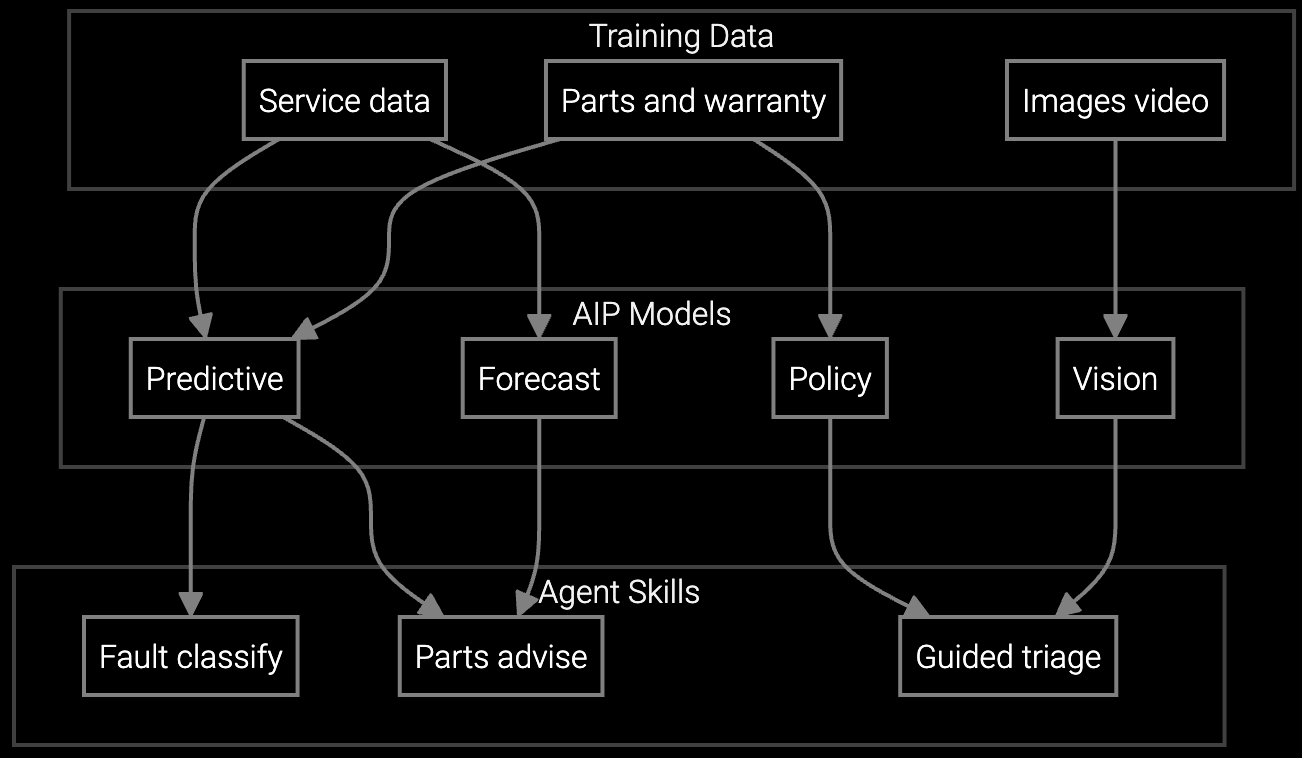Decision Support for Field Technicians
Mobile AI assistant guides field technicians with real-time diagnostics and parts recommendations, reducing repeat truck rolls by 38% and improving first-time fix rates.
Challenge
Service teams must deliver fast, high-quality support while reducing cost. Inconsistent diagnostics and siloed systems drive wrong parts picks, repeat truck rolls, and unresolved tickets. Agents and techs swivel between CRM and FSM, ERP and WMS, and knowledge bases; tribal knowledge sits in notes. Field technicians need mobile access to service history, real-time updates, and guided triage to fix issues on the first visit.
The objective: reduce repeat truck rolls by about 38 percent; auto triage and guide at least 60 percent of faults with policy compliant steps; improve first time fix by at least 12 points while cutting MTTR by 25 percent.
Solution: How AIP changed the operating model
Learning and setup
Powered by the Aftermarket Intelligence Platform, the agentic solution applied its predictive, policy, vision, and forecasting models. Training data came from tickets and resolutions, failure codes, technician notes and transcripts, telemetry logs, parts and warranty data, SOPs, annotated images and videos, and asset and customer history. The agent recognizes model and serial, service history, error codes and symptoms, images and video, telemetry, geolocation, part IDs, inventory and ETA, warranty and contract, appointments, and technician skills.

Workflow orchestration
The AI agent reads cases and telemetry, extracts identifiers, and selects the path to check entitlement, triage the fault, recommend parts, schedule a visit, or ship advance replacement. It navigates CRM cases, FSM dispatch, ERP and WMS, the knowledge base, logistics portals, and telemetry sources, writing back every action and note. Logic branches on policy and confidence, for example low confidence or safety risk routes to an expert; a stockout triggers alternate warehouse or substitute part. Mobile is offline first with sync.

Execution and resolution
The AI agent classifies the fault, predicts root cause and parts, generates job specific checklists and guided steps, verifies warranty, reserves and ships parts, pre fills the ticket, schedules the visit, and pushes guidance to mobile. Triage completes in seconds and end to end handling in minutes, with status and KPIs updated across systems. During the visit the mobile app captures photos, tests, notes, and signatures; the agent validates results and closes the loop with automated returns for unused parts. Exceptions such as ambiguous symptoms, unsafe conditions, multi component failures, entitlement disputes, or no stock are routed to experts with full context.
